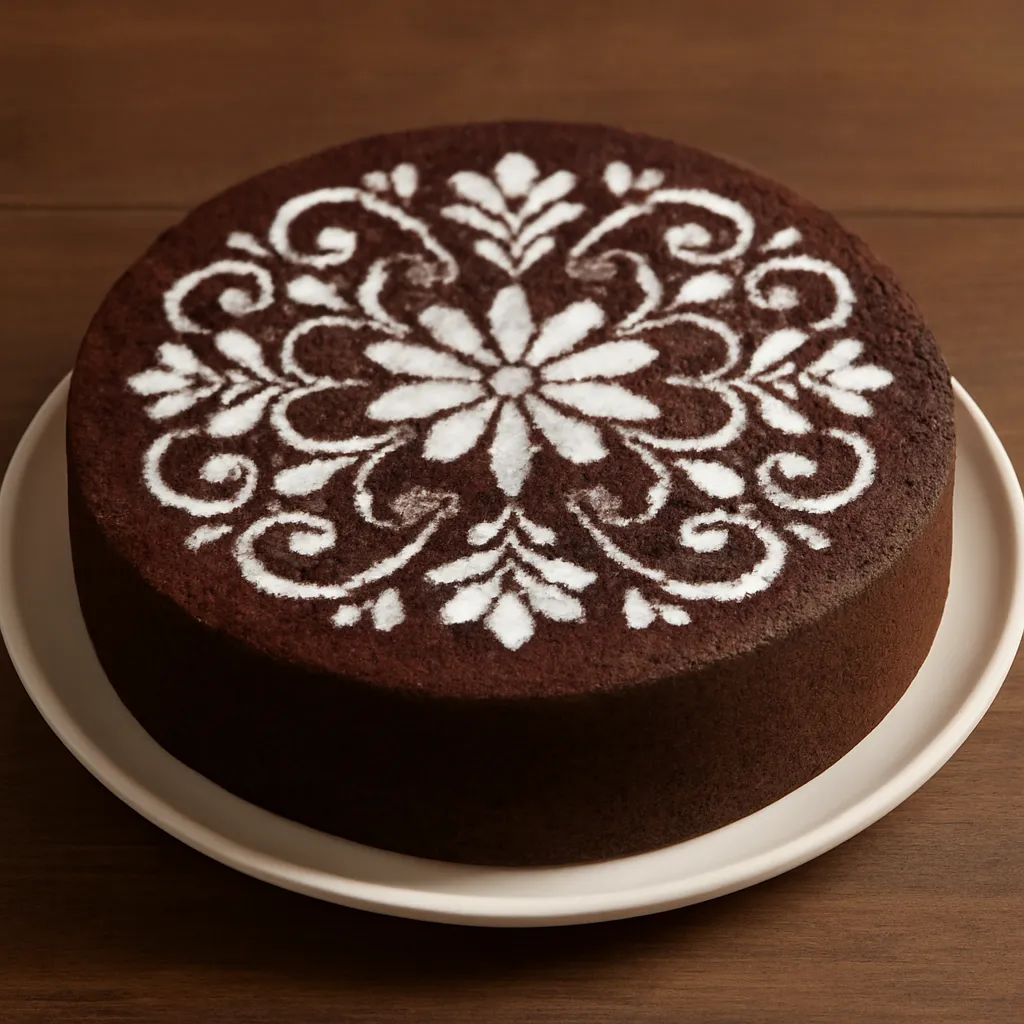Introduction
Sometimes, the simplest decorations are the most elegant. Using only powdered sugar (also known as confectioners’ sugar or icing sugar) to decorate a cake is a quick, budget-friendly, and charming way to add a touch of beauty. Whether you’re short on time, avoiding heavy frostings, or simply want a light, classic finish, powdered sugar can transform a plain cake into a visually appealing centerpiece. In this guide, you’ll learn how to decorate cakes using powdered sugar, along with tips and techniques for creating professional-looking results.
Why Use Powdered Sugar for Decoration
Powdered sugar has a fine texture and a snowy white appearance that gives cakes a clean, delicate look. It’s ideal for:
- Adding elegance without overpowering the cake’s flavor.
- Reducing sweetness compared to heavy frostings.
- Creating designs with stencils for special occasions.
- Adding a finishing touch to fruit-topped cakes or simple sponges.
- Saving time when you want a decorated cake without extensive preparation.
This method is also perfect for cakes that are meant to be served warm, such as bundt cakes or pound cakes, where frosting might melt or feel too heavy.
Choosing the Right Cake
Not all cakes are equally suited for powdered sugar decoration. The best options are those with a relatively flat, firm surface that will hold the sugar without it dissolving too quickly. Ideal cakes include:
- Pound cake
- Bundt cake
- Sponge cake
- Coffee cake
- Flourless chocolate cake
Cakes with moist or sticky tops may cause the sugar to melt too quickly, losing the design. For very moist cakes, dust just before serving.
Preparing the Cake Surface
Before decorating, make sure your cake is completely cooled. A warm cake will absorb the powdered sugar, making it disappear. If the surface of the cake is uneven, you can trim it slightly for a smoother canvas. For bundt cakes, ensure the pattern is clean and free of crumbs for a crisp sugar finish.
Tools You’ll Need
To decorate with powdered sugar, gather the following tools:
- Fine-mesh sieve or sifter for even distribution.
- Stencils (store-bought or homemade) for patterns.
- Parchment paper to create custom designs.
- A small spoon for controlled placement.
- A clean work surface to avoid sugar mess.
Basic Dusting Technique
The simplest method is a light dusting over the cake’s surface. Place the powdered sugar in a fine-mesh sieve, hold it a few inches above the cake, and tap gently to sprinkle a thin, even layer. For a rustic look, dust heavier in some areas. For a neater presentation, rotate the cake while dusting for full coverage.
Creating Patterns with Stencils
Stencils allow you to create intricate designs with powdered sugar. Here’s how to do it:
- Place the stencil flat on top of the cooled cake.
- Hold the sieve above the stencil and dust with sugar.
- Carefully lift the stencil straight up to avoid smudging the design.
You can use stencils shaped like hearts, flowers, geometric patterns, or themed shapes for holidays and celebrations. Homemade stencils can be made from parchment paper or clean cardboard cut into desired patterns.
Using Parchment Paper for Custom Shapes
If you don’t have a stencil, you can cut shapes from parchment paper and place them on the cake before dusting. Once the sugar is applied, lift the shapes to reveal the contrasting design. This technique is great for initials, numbers, or simple silhouettes.
Layered Sugar Decoration
For a more dramatic effect, you can layer the powdered sugar with other toppings. For example, dust the cake, then add fresh fruit or edible flowers on top. This combination works beautifully for tea parties or elegant desserts.
Tips for Best Results
- Dust the cake shortly before serving to maintain the fresh appearance of the sugar.
- Avoid decorating in a humid environment, as moisture can cause the sugar to clump or dissolve.
- If your cake is very moist, sprinkle a light layer of cocoa powder first to act as a barrier before adding the sugar.
- Keep the layer thin — too much sugar can overpower the cake’s flavor and texture.
- Use contrasting colors for visual impact, such as powdered sugar on a chocolate cake or cocoa powder on a light cake.
Example: Decorating a Flourless Chocolate Cake with Powdered Sugar
- Allow the cake to cool completely and transfer it to a serving plate.
- Place a floral stencil over the top.
- Dust lightly with powdered sugar through a sieve.
- Gently remove the stencil to reveal the pattern.
- Serve immediately for maximum visual appeal.
This simple decoration turns a rich, dark cake into an elegant dessert with minimal effort.
Frequently Asked Questions (FAQ)
Q1: How can I stop powdered sugar from melting on my cake? If your cake is very moist, apply the sugar just before serving or use a fine layer of cocoa powder or cornstarch underneath.
Q2: Can I use icing sugar instead of powdered sugar? In most regions, they’re the same product. Just ensure it’s very fine and lump-free.
Q3: Can I color the powdered sugar? Yes, mix it with edible powder food coloring for pastel shades.
Q4: How do I make homemade powdered sugar? Blend granulated sugar with a little cornstarch in a blender until very fine.
Q5: Is powdered sugar decoration suitable for frosted cakes? It’s best for unfrosted cakes, as frosting may absorb the sugar.
Conclusion
Decorating a cake with powdered sugar is one of the easiest, quickest, and most charming ways to enhance its appearance. With simple tools like a sieve and stencil, you can create anything from a rustic dusting to intricate patterns. This technique is perfect for when you want a beautiful presentation without the effort of full frosting, making it a go-to for home bakers and professionals alike.

